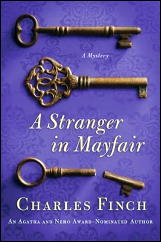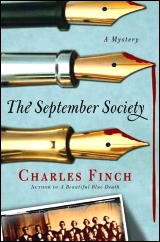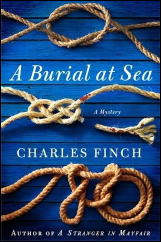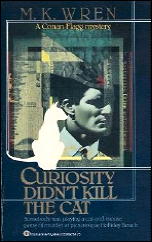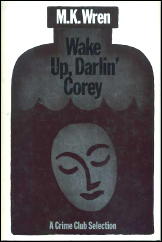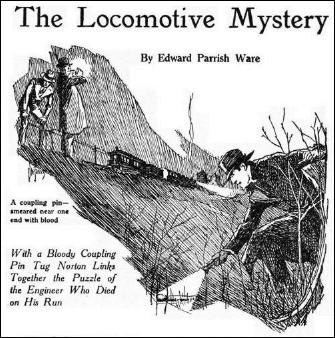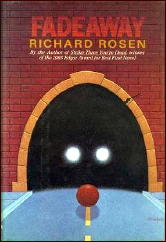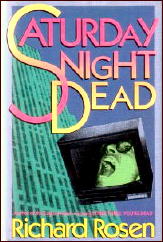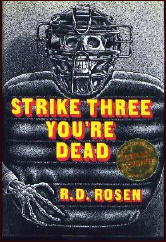THE SERIES CHARACTERS FROM
DETECTIVE FICTION WEEKLY
by MONTE HERRIDGE
#7. TUG NORTON, by Edward Parrish Ware.
Tug Norton is a private detective and creation of prolific author Edward Parrish Ware (1884-1967?). These stories are told first hand by Tug Norton:
“… case of record in the archives of the Kaw Valley Detective Bureau, of which I, Tug Norton, am founder, owner and chief operative …†(The Queen’s Patteran)
Norton notes that when business is dull, he entertains and instructs himself by studying his casebook (The Devil Winks). This is how some of the Norton stories begin, with him reliving the case he has looked up in his files.
Tug Norton is a former cowboy and policeman. He formerly served in the police department in Kansas City, but lost his position there when new police commissioners came into office and fired “all those politically off-colored,†including him. (Lost Lake)
His past as a cowboy is brought out in the story “The Sow’s Earâ€, in which Lafe Spear, a friend of his from Oklahoma, shows up at the agency to hire him. Lafe Spear and Norton had worked together as cowboys some twelve years previously. This story is written as a contemporary Western: horses are used, and the principals dress as cowboys (including Tug Norton). The setting is rural Oklahoma.
The Kaw Valley Detective Bureau is based in Kansas City, Missouri, but the cases are also spread out in numerous other locations. Norton states in one story that he was not interested in out-of-town cases, and that he was “confining my practice—what there is of it—to the city.†(The Tomahawk)
However, contrary to this declaration, Norton does take cases outside Kansas City. In the Norton series there are some stories in an urban setting, but the series is a wide-ranging one and has quite a few stories in rural settings. For example, one story, “The Silent Partnerâ€, begins in Kansas City but most of the action takes place in the wilds of Arkansas.
“Empty Pouches†takes place in Arkansas, “The Trackless Trail†and “The Tomahawk†cases are in Kansas, “The Queen’s Patteran†in and around Joplin, Missouri, and so forth for many other cases. “The Devil Winks†is mostly in Kansas City, but the climax and finish take place in rural Arkansas.
In “A Dead Man in the Cast,†Norton discusses an early case in his career, before he had any assistants. At that time the agency consisted of just himself and his secretary-receptionist Mary Malloy. The offices at that time were in suite 606 (sixth floor), Gateway Building.
Norton never used the front entrance to his offices, instead using as the entrance another door along the hall that showed the words: Andrew Harper, Stocks & Bonds, Private. This suite masked an entrance to his real offices next door.
In another early story from his career as a private detective, “The Wheels Turn,†shows a client hiring him at his hotel. Norton mentions that a year after this case his offices were in the Sandstone Building. In his early cases Norton seems to have been aided by having cases referred to him by Chief Enger, his former boss at the Kansas City Police Department.
He does use other operatives in his work, and they show up in the stories from time to time. As of the early 1927 stories, Jim Steel was his chief assistant, and worked with him on “The Queen’s Patteran†case among others. Other unnamed detective operatives also show up in stories such as “When Fate Wants a Man.â€

Norton has an office boy named Spec, who announces visitors and would-be clients. Spec is noted as being “something of a mimic.†(A Game With Death) No doubt he is also a detective in training.
Norton on occasion is called in to help various law enforcement officials in Missouri. The story “A Game With Death†features one of those cases. A sheriff named Hap Craker calls on Tug Norton in his Kansas City office and asks for help against a gang of criminals infesting his county.
In another case, Sheriff Sam Sneed from Arkansas, an old acquaintance of Norton’s, comes to him for help in solving a series of robberies and murders. (Empty Pouches) In a third case, Sheriff Rube Wallace of Cold Springs County called for Norton’s assistance in a multiple arson and murder case. So it appears that Tug Norton had gained a good reputation for solving difficult cases.
The Kaw Valley Detective Bureau is also on retainer with various clients, or in other words paid at regular intervals in case their services are needed. “The Dumb Spot†is an example where one of these clients calls them in to help solve a bank robbery and murder.
The agency has connections with other detective agencies around the country, and they could call in for help on a case if necessary. This is the case in “Dynamite and Six-Guns,†where a friend from a Chicago detective agency has a case that is taking him to Kansas City. He calls Norton and asks for his agency’s assistance in the matter. It turns out to be an exceedingly violent case for Norton, but he wins a big fee.
Some of his cases are just downright offbeat and strange. The first is “The Seven Coffins”, a story late in the series. Norton’s agency is hired to guard six empty coffins in a deceased millionaire’s mansion, but the mystery of the seventh coffin causes murder. The mortician and his assistant are involved, and one scene takes place at the funeral home.
In another case, “The Tomahawk,†a rich man has suddenly become a hermit in his own mansion, and Norton has to find out why. In this case, an old Gypsy curse from a nearby tribe is the reason for the man’s behavior.
Even though there is plenty of violence in the series, with numerous gunfights, Norton is not a big believer in using guns to solve every problem. In the story “Hell’s Backyard,†he puts forth his philosophy upon the use of guns. He says that any sleuth, either police or private detective, who is overly fond of using guns to solve problems is asking for trouble. He either gets shot or fired for using his gun.
Never, since I founded and began operating the Kaw Valley Detective Bureau, have I kept an operative one minute after he betrayed a tendency to throw his gun upon any and all occasions where gun-throwing could possibly be done and got away with.
I assert that this business of detecting crime and tracing criminals is better done with the head than the gun—and I invite proof to the contrary. (Hell’s Backyard)
This attitude is interesting for that time, considering that the pulps are filled with violence, and gunfights are common in this series. In fact, Ware’s own Ranger Calhoun series are probably some of the most violent in the magazine, and rarely does a story end without the criminal being shot. However, even this series couldn’t compete with Judson Philips’ series about the Park Avenue Hunt Club when it comes to violence.
Norton is a bit of a philosopher, and begins many of the stories with some of his philosophy (based on experience and observation). Here is an example:
I take issue with the blasé boys who see everything through smoked glasses. Life is never drab. That drab stuff is a state of mind. To me, life is full of color—a field of gorgeous poppies. Flame! Multicolored, magnificent! Devastating, too. Well, what would you? In order to build, we must destroy. In order to live, we must die. (The Devil’s Pocket)
Norton’s idea of a vacation from work is to go fishing. In “Trouble Up the Stream,†he and his assistant Jim Steel go on a week-long fishing trip. However, as expected, they run into trouble and have to solve a murder.
This series was begun during the formative period of the hard-boiled private detective type of story, but still uses features of the more formal detective story, such as the use of logic and deduction to solve crimes. It does have some features of the hard-boiled story; the stories are still very violent in the private detective way, with the conclusion often resolved with gunshots.
Tug Norton is definitely a tough, hard-boiled detective with plenty of experience, and his speech and behavior show this. He doesn’t act like the stereotypical lone wolf private detective. He is more of a descendant of the older detective characters of the dime novels type. Many, but not all, of the new private detective stories are primarily urban in setting.
Ware had many stories published in Flynn’s/Detective Fiction Weekly in the 1920s-1930s. The Tug Norton series numbered 40 stories from 1926-1934, including two in Dime Detective. The Ranger Jack Calhoun series, also by Ware, numbered at least 59 stories from 1926-1936.
A third series by Ware was the Buck Harris series of 12 stories 1930-1934. Battle McKim was another series by Ware, counting 12 stories 1934-1935. Ware’s character Sheriff Bob Stratton appeared in 2 stories in 1929.
So Ware was very busy writing for this one pulp title. His Calhoun stories seemed to be the most popular, and the character appeared on the magazine’s cover a number of times. Tug Norton, although seemingly not as popular, was in my opinion the better written series.
The Tug Norton series by Edward Parrish Ware:
From Detective Fiction Weekly:
The Tree-Top Trail January 30, 1926
The Fifth Gate March 13, 1926
The Queen’s Patteran January 1, 1927
Hell’s Backyard March 26, 1927
The Silent Partner April 2, 1927
Lost Lake May 14, 1927
The Hole in the Hill October 1, 1927
Empty Pouches December 3, 1927
The Tomahawk February 18, 1928
The Devil’s Pocket February 25, 1928
The Devil Winks March 3, 1928
Hitched to the Wind April 14, 1928
The Wheels Turn April 28, 1928
When Fate Wants a Man October 20, 1928
When Thief Catches Thief December 1, 1928
Signed With Lead December 15, 1928
The Death Stone November 2, 1929
The Trackless Trail November 30, 1929
The Locomotive Mystery February 22, 1930
Hot Eyes July 5, 1930
A Game With Death May 24, 1930
The Sow’s Ear October 18, 1930
Prison Shoes November 22, 1930
The Jade Boomerang December 6, 1930
Snow Camp December 13, 1930
A Background of Vendetta April 11, 1931
Consider the Sphinx October 24, 1931
Trouble Up the Stream November 28, 1931
The Yellow Demon July 16, 1932
The Devil’s Do-All July 23, 1932
The Pole-Axe Problem October 1, 1932
Behind the Green Mask November 12, 1932
Monkey Blood February 25, 1933
Red Skies May 27, 1933
A Dead Man in the Cast August 12, 1933
Dynamite and Six-Guns January 20, 1934
The Seven Coffins February 17, 1934
The Dumb Spot June 9, 1934
From Dime Detective Magazine:
The Skull of Judgment March, 1932
The Gallows Clue July 15, 1933
Previously in this series:
1. SHAMUS MAGUIRE, by Stanley Day.
2. HAPPY McGONIGLE, by Paul Allenby.
3. ARTY BEELE, by Ruth & Alexander Wilson.
4. COLIN HAIG, by H. Bedford-Jones.
5. SECRET AGENT GEORGE DEVRITE, by Tom Curry.
6. BATTLE McKIM, by Edward Parrish Ware.




